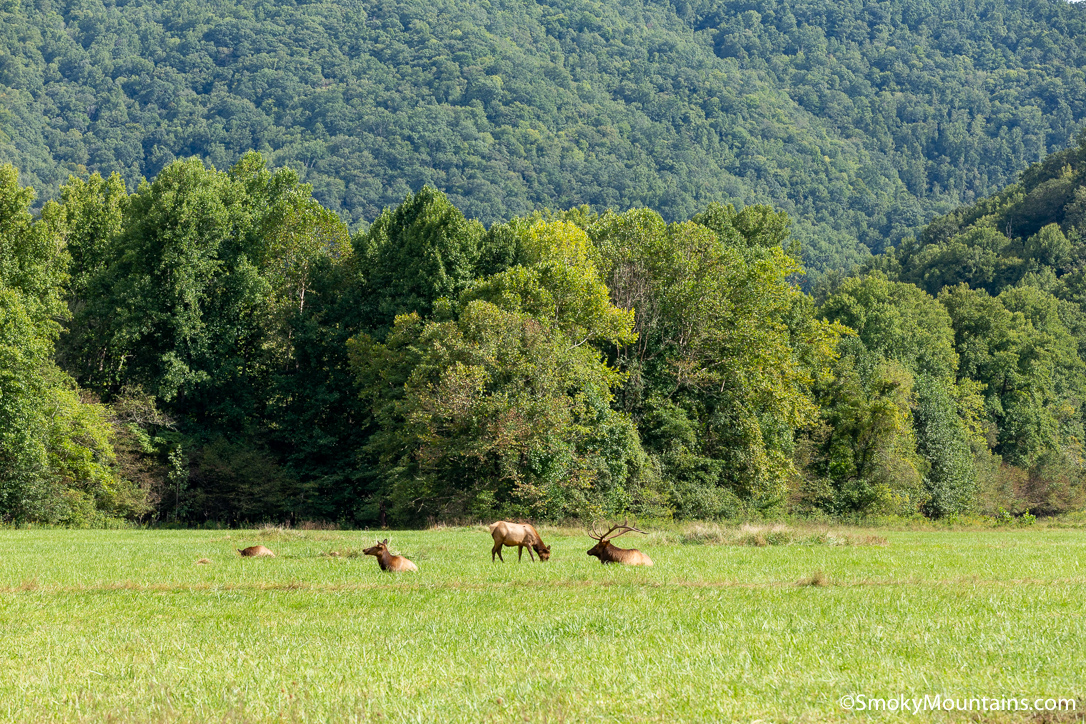The Great Smoky Mountains National Park is a backpacker’s paradise! With 800-miles of trails and more than 100 designated backcountry campsites, there’s an adventure for every skill level.
That’s why we created our Great Smoky Mountains National Park Backpacking Guide! You’ll discover tips, gear, and links, so you can plan a safe, adventurous, and successful trek.
Let’s get started!
Permits

All backpackers must get a permit with the National Park Service (NPS), including thru-hikers: those going from point to point like the Appalachian Trail. You may also obtain permits at the Sugarlands Visitor Center near Gatlinburg, TN.
The NPS website has a great list of planning tips. Here are a few standouts:
- Permits may be obtained up to 30 days in advance
- The maximum party size is 8
- Seasonal and weather-related closures may impact your trip
Regulations

Most hikers respect the great outdoors without causing erosion, polluting water sources, and who “leave no trace.” But as you know, “One bad apple spoils the bunch,” so the NPS created regulations to protect the park. Violators can be slapped with a $5,000 fine and get up to six months in jail.
The NPS regulations list is extensive, so read up on them before your trip. The following are some points to emphasize:
- You may not stay at any backcountry campsite for more than three consecutive nights
- You may only camp in designated campsites. Hammocks cannot be attached to shelters
- Shelters are only for those with a Thru-Hiker Permit
- Food and trash must be hung on bear cable systems at each campsite or shelter
Safety

The safety advice found at NPS Tips is suitable for seasoned backpackers to review and paramount for novices to embrace. Here’s a sampling:
- Trees & Limbs: Camp away from trees that pose a threat or whose limbs could fall.
- Storms & Wind: Getting wet from rain is one thing, but being on high ground during a thunderstorm is dangerous. Violent winds can topple trees, and lightning strikes could prove fatal.
- Hypothermia: Hypothermia is when your body’s core temperature drops, and you experience diminished physical and mental capabilities. Rain, wind, and cold streams can cause hypothermia even in the summer! To help prevent hypothermia, wear moisture-wicking clothing and avoid cotton that doesn’t dry out quickly.
- Streams & Waterfalls: Only cross steams that you’re confident you can make. Always scout the stream for the safest entry and exit point. Never climb waterfalls or cross the top; many fatalities have occurred in this way. Never cross white water if it’s above your knees.
- Drinking-Water: Yes, the mountain streams look inviting to drink but do so after boiling for one minute or using a filtration system.
Black Bears

We have a superb article on Black Bears, and we highly encourage you to read it! Not only could it save your life, but you’ll have a deeper appreciation of these fantastic, powerful animals. Note these NPS tips for Black Bear guidelines:
- Bears are unpredictable: Do not approach. Do not let them approach you.
- Hikers may carry pepper spray but only as a deterrent: Make sure the repellant complies with NPS guidelines.
- NPS may close areas due to bear problems, so check before you go.
- If you get closer than 50 yards to a black bear, you will be fined.
- Do not feed bears: “A fed bear is a dead bear.”
- If attacked, remove your pack containing food: If the attack continues, fight back aggressively; don’t play dead.
Gear

We’re approaching the topic of gear as if you’re new to backpacking. Our list is by no means the end-all of what you’ll need, but it’s a good starting point.
Lastly, our list is intended for a 2-3 day backpacking trip during warmer months. Longer treks and those in colder seasons will need additional gear.
- Backpack: Some hikers suggest a pack with at least a 55-gallon capacity. Others prefer smaller packs but also pack less, too.
- Sleeping bag: Make sure you get a bag that’s temperature-rated for conditions you’ll be experiencing.
- Sleeping pad: Even if you use a hammock, these make sleeping more comfortable.
- Tent.
- Tarp: Many hikers prefer using a tarp over a tent. Those that pack a tent include a tarp for additional shelter for cooking and drying clothing.
- Boots: Although some hikers prefer trail shoes, boots give better ankle support and protection.
- Water shoes or Sandals: Consider changing from boots to water shoes or closed-toe sandals when crossing streams. Sandals are also comfortable at camp when you want to relax.
- Synthetic wool socks: This material wicks away moisture to keep toes warm and dry.
- Rain jacket: A good rain jacket will keep you from getting soaked and possibly hypothermia.
- First-Aid Kit: Make sure you have the basics: Band-Aids, Neosporin, Advil (for sore muscles and aches), gauze.
- Weather Radio: A weather radio is a great backup system for up-to-date weather alerts. Cell service is sketchy in the Smoky Mountains.
- Map
- Knife and Multi-purpose Tool
- Flashlight and Extra Batteries: Some use a cycling headlight because they emit more lumens and are easier to mount at camp.
- Waterproof matches/Flint
- Water Filtering System
- Water Bottles
- Hiking Poles: Two poles make crossing streams more manageable, and they can be used as tarp poles, too.
Trails

The Great Smoky Mountains National Park trails are too extensive to cover in this post. But as we stated at the beginning, there’s a trail for every level of ability.
Here are but two:
Hiking the 7-mile Albright Grove Loop is perfect for beginners. The loop has historical structures and old-growth forests. The trail isn’t too challenging, with only 1,500 feet of elevation gain.
For the experienced hiker or those wanting a challenge, there’s Mount LeConte. The 13-mile trail climbs one of the steepest mountains and traverses rocky and challenging terrain.
Whether you’re a novice or an intrepid outdoors person, we hope our Great Smoky Mountain Backpacking Guide has been a great resource!




